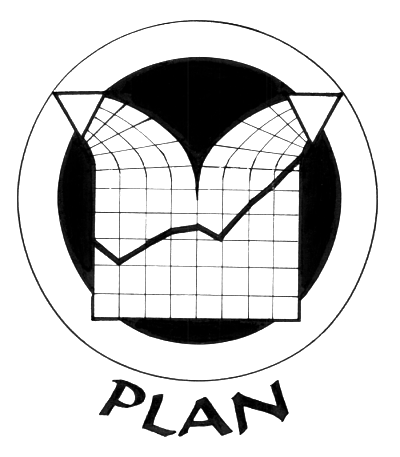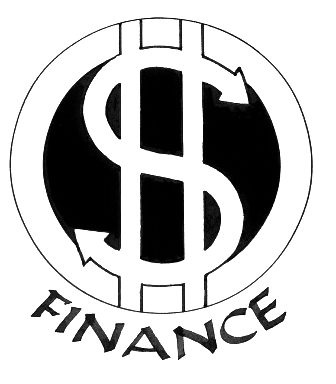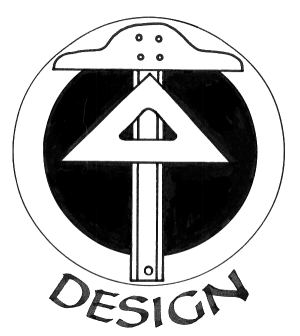
OEM Strategic Remanufacturing
A Business Model for Equipment and Service Parts
Rental and Exchange Programs
Ron Giuntini, Principal
Giuntini & Associates
The traditional business model of Original Equipment Manufacturers (OEMs) has focused primarily upon selling their products outright and maintaining their profitability through: direct labor cost reduction, higher production equipment utilization, accessing lower cost of capital, improving product quality, and reducing production cycle times. The one area today in which OEMs have the single greatest opportunity to significantly increase their profitability is through the improvement of the material productivity of their finished goods equipment products and service parts. Raw material costs and the cost associated with the acquisition and storage of material typically constitutes an average of 45% of the entire cost structure of an OEMís product (and even higher for products which are purchased as finished goods from their suppliers). The remaining cost structure is composed of: Manufacturing Overhead (15%), Direct Labor (10%), SG&A (20%), Product Development (5%), and Profit Before Taxes (5%). This article will discuss how OEMs, though the re-engineering their business model to that of the Strategic Remanufacturing model, will be able to:
- generate gross margin percentages that are as great as 3 to 4 times larger than the current business model of primarily selling/transferring the ownership of new products,
- reduce total product operating costs for its end-users,
- provide increased product reliability/availability to its end-users,
- reduce the current and future costs associated with product liability risks,
- diminish the balance sheet investment required by end-users to obtain product utility,
- dramatically reduce the traditional cyclical swings in profitability and employment,
- significantly increase contact with its current end-users,
- create new markets for its products,
- reduce industrial waste disposition costs,
- reduce current and future environmental liability risks.
"...the task is, not so much to see what no one has seen;
but to think what nobody has yet thought, about that which everybody sees."
Erwin Schrondinger
The OEM Strategic Remanufacturing business model financially and operationally positions an OEM to design and market business solution services through Rental and Exchange Programs. In order for an OEM to maximize profitability using the model, it must retain the ownership of its product and proactively manage its material productivity throughout the productís entire physical life. By applying this business model, many OEMs could renew, with a minimum expense, 50 to 70% of the original value of impaired materials recovered from customers, resulting in the potential reduction of an OEMs overall cost structure by as much as 30-50%. The model works best when an OEMís annual new equipment production, over the last 3 years, is less than 5-10% of its existing installed equipment base.
Parts of the business model are already being implemented:
- OEMs are beginning to directly rent their products by buying sales/rental distributors or setting-up their company-owned distribution channels
- John Deere (farming)
- Miller Industries (towing)
- Atlas Copco (pneumatics)
- OEMs are buying Independent Service Organizations (ISOs)
- GE (aircraft engine remanufacturing)
- Boeing (airframe maintenance)
- OEMs are designing their products to be renewed
- Xerox (copiers)
- BMW (vehicles)
- OEMs are pre-selling their company-owned products, before the current users end-of-service-life, to less-developed countries
- Northern Telecom (telephone switches)
- Compaq (computers)
- Financial service organizations have created flexible instruments for the recapitalization required for the implementation of the business model
- Sale and leaseback
- Asset-Backed Securities
There are 13 processes which must exist in order to create the OEM Strategic Remanufacturing Business Model. These processes are highly interactive with each other and the model requires a highly systemic view of the OEMís business enterprise.
"A business model based on one or two strengths becomes obsolete as success begets imitation, but the competition will find it much more difficult to replicate systems that incorporate many distinct and complementary capabilities"
Amar Bhide
Harvard Business School
 A strategic plan must be developed which will change the industryís rules-of-the-game and ensures that competitors will find it difficult to "catch-up" to the new business model. (For those OEMs who are in the process of converting, most have kept a very low profile due to the strategic impact of their re-engineering.) An OEM can expect that a full conversion from an outright-sale model to that of a rental/exchange model will be a 3-4 year transition. (Of course not all products lend themselves to this model.)
A strategic plan must be developed which will change the industryís rules-of-the-game and ensures that competitors will find it difficult to "catch-up" to the new business model. (For those OEMs who are in the process of converting, most have kept a very low profile due to the strategic impact of their re-engineering.) An OEM can expect that a full conversion from an outright-sale model to that of a rental/exchange model will be a 3-4 year transition. (Of course not all products lend themselves to this model.)
 Robust managerial accounting systems and their corresponding cues for operational decision-making must be thoroughly reviewed. The current BOK on remanufacturing managerial accounting is virtually non-existent. The application of financial accounting in this area is also extremely weak. Without a thorough review of this area, the model will create significant P&L and Balance Sheet instability and ultimately resulting in the rejection of the model by the top executives of the OEM.
Robust managerial accounting systems and their corresponding cues for operational decision-making must be thoroughly reviewed. The current BOK on remanufacturing managerial accounting is virtually non-existent. The application of financial accounting in this area is also extremely weak. Without a thorough review of this area, the model will create significant P&L and Balance Sheet instability and ultimately resulting in the rejection of the model by the top executives of the OEM.
Another area of review is ensuring that there is adequate cashflow during the transition period of selling products (and immediately recouping the costs associated with building a new product) and that of renting/exchanging a product (where the transactions do not immediately generate the cashflow required to recoup the investment of building a new product). The business model, if fully implemented requires a virtual recapitalization of the organization. A financial instrument to achieve this transition, besides normal bank loans, is the utilization of Asset-Backed Securities. These securities enables the OEM to access capital at rates 150 to 200 basis points below normal bank loans and it also favorably addresses some of the financial accounting/GAAP reporting issues.

Today, most product design engineers are currently focused upon attempting to optimize new equipment: cost-of-manufacturing, production process times, and quality. With the Strategic Remanufacturing business model, another set of optimization variable is included: design-for-ease-of-disassembly/ re-assembly, design-for-maintainability, design-for-exclusivity, and design-for-reclamation. It is during this process that the future profit streams for an OEM are "locked-in." This process is by far the most cost-effective means of ensuring the success of the business model. (This is also why non-OEMs cannot implement this model.) Also, if the OEM does not retain ownership of the product through exchange and rental programs, it would be Independent Service Organizations (ISOs) who would reap the vast majority of the profits of the re-engineering of the product design process.
Insert MARKET LOGO here
The Marketing organizationís incentive cues must be changed in order to successfully implement the model. Cues which are driven exclusively by revenue generated during a finite accounting period, will result in salesmen "fighting" the more profitable, but multi-accounting period revenue base of the Rental and Exchange Program OEM Strategic Remanufacturing business model. The model must address this paradigm shift and change the rules-of-the-game for the salesmen so they benefit personally, both short-term and long-term, when embracing the business model.
Insert LEGALIZE LOGO here
The OEM must create legal terms and conditions which allows access of their products only to their authorized channels of distribution. Assuring that impaired products, which can be remanufactured, do not go into the possession of non-authorized ISOs is a critical part of the business model. For example, all service parts which can be remanufactured should be rented when installed on a new piece of equipment (which is either sold outright or rented). Obviously there should be an incentive for the customer to rent these parts, rather than take ownership of them, but the key strategic issue is that the customer has a legal commitment that the impaired service part must be returned to the OEM. If an ISO is found in possession of an impaired rental service part, the OEM can legally repossess the impaired unit from the ISO, and may even take legal action against the ISO. The Supreme Court has ruled that once ownership of a product has been transferred, the OEM does not have the right to dictate how the equipment-installed baseís life-cycle can be managed.
Insert REVERSE LOGO here
This is a process which is cycle-time sensitive to the activities of returned impaired product management. These activities include: status recognition, physical recovery/isolation, and the review for action (either renewal or removal from current supply-chain). The business model requires that there is a continuous attack on reducing cycle times. The smaller the amount of impaired products in the supply-chain, the smaller the overall assets that are required to meet the next customer demand for a non-impaired product. Third-Party Logistics Management organizations have developed robust infrastructures to manage this activity.
Insert DISASSEMBLE LOGO here
Impaired returned products can be completely disassembled, with all the reclaimed parts classified as raw material and with the reclaimed parts being the same as those that were acquired for the new product assembly. Impaired returned products can also be partially disassembled with key subassemblies remaining intact. (In this case, the disassembly BOM is not an exact reversal as that of the new product BOM). Both of these operational efforts are labor intensive. Reclaimed parts can either be impaired or non-impaired. The disassembly production schedule is driven by the material acquisition requirements of the remanufacturing assembly schedule.
Insert ACQUIRE LOGO here
In this process material acquisition and storage activities are executed in order to support the internal organizational operational processes of product assembly, parts renewal, and raw material manufacturing. The sources of this material are from:
- the organization-owned, non-impaired materials reclaimed during the disassembly process
- purchases from external suppliers
- internally manufactured parts.
Insert MANUFACTURE LOGO here
Internal or external suppliers are required in order to meet the demands of the material acquisition process in order to support the assembly processes, as well as the renewal processes. These suppliers can be internal manufacturing cells or external organizations.
Insert RENEW LOGO here
Stored physically impaired parts, which were obtained from the material acquisition process, are brought back to a non-impaired status through the operational activities of:
Maintaining the current product configuration through:
- remanufacturing (creating a planned service-life comparable to that of a new product)
- repair
(continuing the current service life)
Changing the current products configuration through:
- recycling (removing all/partial of the value-added content from previous Supply-Chain operational activities)
- reconfiguration
(creating a different form, fit or function from the impaired product received into the renewal process)
Insert ASSEMBLE LOGO here
The Final Assembly Master Production Schedule (MPS) must be created. Depending upon the combination of finished goods availability and transactional types of outright sale, rental, or exchange, the assembly process can be exclusively comprised of reclaimed material, or a combination of reclaimed and new parts, or exclusively new parts. An example where exclusively new materials is used is when an organization has an Exchange Program, where the planned material condition for fulfilling demand is the utilization of remanufactured products. If demand outstrips remanufactured product supply, then new product must be assembled in order to meet Exchange Program demand.
Insert SERVICE LOGO here
In order to maintain the utility of the installed base, an OEM, or its designated channels of distribution, should provide a majority of the following Product Support Services of:
Service Parts distribution and renewal
Documentation
Product enhancement engineering
Training
Support equipment distribution and renewal
Technical consulting
Corrective/preventive equipment maintenance
Equipment operations
Equipment installation
These services can be extremely profitable to the OEM.
Insert REMOVE LOGO here
When an organization has selected to remove an impaired product (physical, economic, or regulatory compliance), the OEM can either resell the product to alternative channels of distribution or retire the product as waste. There are several options for reselling an impaired product and obtaining some form of economic benefit:
Sell to brokers who will access non-traditional channels of distribution
Sell to scrap dealers
Donate to a non-profit organization
Sell back to the original supplier
Others
If the organization must dispose of the product through the waste stream, it has two choices, both which will result in additional cost:
Municipal waste
HazMat waste
The OEM Strategic Remanufacturing Business Model for equipment and service parts exchange and rental programs has many interdependent components and requires for its success a systemic approach at running a business. It is inevitable that OEMs will move to parts or all aspects of the business model within the next 7 to 15 years. Those OEMs who are the pioneers in successfully implementing the business model will come to dominate their business sectors.
Author | Title | Tracks | Home
 A strategic plan must be developed which will change the industryís rules-of-the-game and ensures that competitors will find it difficult to "catch-up" to the new business model. (For those OEMs who are in the process of converting, most have kept a very low profile due to the strategic impact of their re-engineering.) An OEM can expect that a full conversion from an outright-sale model to that of a rental/exchange model will be a 3-4 year transition. (Of course not all products lend themselves to this model.)
A strategic plan must be developed which will change the industryís rules-of-the-game and ensures that competitors will find it difficult to "catch-up" to the new business model. (For those OEMs who are in the process of converting, most have kept a very low profile due to the strategic impact of their re-engineering.) An OEM can expect that a full conversion from an outright-sale model to that of a rental/exchange model will be a 3-4 year transition. (Of course not all products lend themselves to this model.)
 Robust managerial accounting systems and their corresponding cues for operational decision-making must be thoroughly reviewed. The current BOK on remanufacturing managerial accounting is virtually non-existent. The application of financial accounting in this area is also extremely weak. Without a thorough review of this area, the model will create significant P&L and Balance Sheet instability and ultimately resulting in the rejection of the model by the top executives of the OEM.
Robust managerial accounting systems and their corresponding cues for operational decision-making must be thoroughly reviewed. The current BOK on remanufacturing managerial accounting is virtually non-existent. The application of financial accounting in this area is also extremely weak. Without a thorough review of this area, the model will create significant P&L and Balance Sheet instability and ultimately resulting in the rejection of the model by the top executives of the OEM.